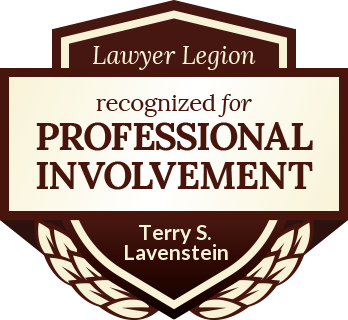By: Leonard Birdsong
[ad_1]
The common law felony murder rule provides that if a person kills another in doing or attempting to do an act amounting to a felony, the killing is murder. It does not matter whether the death was intended or the product of a reckless disregard for the risk to human life or criminally negligent behavior. Even completely unintended or accidental death may trigger murder liability for felons. Every American law student learns this rule in their first year of law school. Prosecutors and law enforcement find the rule attractive for it provides a formal track of liability which permits a conviction regardless of the juror’s assessment of culpability.
Felony murder is akin to strict liability crimes in that no mental element or mens rea must be proven. The felony murder rule operates in direct opposition to the fundamental principle of criminal law that liability ought to reflect culpability. Although some courts have suggested that the felony murder rule dispenses with the requirement of malice, the more usual explanation given by Professor Joshua Dressler and others is that the intent to commit the felony constitutes the implied malice required for common law murder. In its strictest form the rule holds felons liable for murder even if the death occurs during preparation before or flight after the felony. Felony murder is defined by statute in most states and is usually graded as first degree murder. In states with a death penalty felony murderers are eligible for the death penalty.
The law of felony murder varies from state to state but many American courts have engrafted limitations on the rule. Deterrence is often cited as one justification for the felony murder doctrine. Judges and commentators often argue that the felony murder rule encourages criminals to reduce the number of felonies they commit and to take greater care to avoid causing death while committing a felony. I find this explanation laughable!
A number of commentators criticize the felony murder rule and some believe that its use should be abolished in the United States. Despite such criticism the continued use of the felony murder rule by prosecutors persists in most American states. It persists because our legal notion of punishment requires proportionality and proportionality requires grading. For example when Bonnie and Clyde rob the local liquor store at gunpoint they should be punished for committing a felony. Ten years in jail may be adequate if no one is hurt. However, if during that liquor store robbery the store clerk reaches for a .38 caliber handgun under the counter and Bonnie fires her tommy gun at the clerk but misses and kills an innocent store patron the punishment should be enhanced exponentially for this is felony murder. Simply put we grade a robbery plus a killing higher than a mere robbery. The punishment for such crime could be up to life in prison or even death. Felony murder draws a higher punishment for a killing during the commission of an unlawful act.
How did we come to have a felony murder rule in the United States? Conventional legal wisdom presumes that the felony murder rule derives from English common law and supposedly has “deep but terribly obscure roots.” Ironically, the felony murder rule was abolished in England in 1957. This article will explore the historic origins of the felony murder doctrine in effort to determine whether the English felony murder rule is really the basis of our modern day felony murder rules used by various state courts in the U.S.
Readers may be surprised to learn that the felony murder rule did not enjoy a long common law tradition in England. Instead, the doctrine was rooted in English law, as a result of the writings of English legal commentators but not widely applied in English criminal cases. Readers might be interested to know that Spain, France, Germany, Russia and a host of other countries never developed a felony murder rule.
1. BRACTON AND EARLY THINKING ON FELONY MURDER The English sources of the felony murder rule are not a long line of judicial decisions but mainly scholarly commentaries. The felony murder rule may have grown out of the notion that unintended harms that result from the doing of an unlawful act should be punished severely. One commentator contends that the principle that an actor is responsible for the unintended harms resulting from an unlawful act is ancient, with roots in Christian ethics and common law.
The early English common law of criminal homicide began with the principle that all people who cause death, whether intentionally or accidentally were liable for murder. There was no felony murder rule during this early formation of the English common law.
The English jurist and cleric, Bracton, writing in the mid-thirteenth century applied canon law ideas to the crime of homicide. Henry of Bratton (Henricus de Brattona or Bractona) was an English judge of the court known as coram rege (King’s Bench) from 1247 – 1250 and again from 1253 – 1257. After his retirement in 1257, he continued to serve on judicial commissions. He was also a cleric, having various benefices, the last of which being the chancellorship of Exeter cathedral, where he was buried in 1268. Bracton’s chief work was his treatise De legibus et consuetuninibus Angliae (On the Laws and Customs of England). The work, now commonly known as Bracton, attempts to describe rationally the whole of English law. Bracton wrote that accidental killing was no homicide “because a crime is not committed unless the intention (motive) to injure exists” and in crimes the intention is regarded not the result.” In discussing homicide, Bracton also wrote:
by chance, as by misadventure, when one throws a stone at a bird… and another passing by is unexpectantly struck dies * * * here we must distinguish whether he has been engaged in a proper or an improper act. Improper, as where one has thrown a stone toward a place where men are accustomed to pass, or while one is chasing a horse or ox someone is trampled by the horse or ox and the like here. But if he was engaged in a lawful act * * * liability is not imputed to him.
According to Bracton the one who threw the stone and did so while engaging in an improper act would be guilty of homicide. He did not say guilty of “murder” but it would be a killing which may require penance. Perhaps, through some form of punishment or fine for such an unintended death. This church notion may well be the root of the felony murder rule: punishment for an unintended death occurring during the course of some other unlawful act.
Until the mid-eighteenth century, the problem of killing in the course of an unlawful act was always considered as a rejoinder to the defensive claim of accidental killing. In the thirteenth century when Bracton was writing this presumptive liability for murder was subject to royal pardons as a matter of course if the killing occurred accidentally (per infortunium) or under necessity of self-preservation (se defendo).
The principle recognized by the later English commentators Coke, Hale and Hawkins in the seventeenth century was that the excuse of per infortunium was not available to one whose hands were soiled by an accidental killing occurring in the course of an unlawful act. This principle was not yet a fully blown felony murder rule but we see an expansion on Bracton’s early embryonic thinking concerning homicide occurring during an improper act.
This principle of a killing with soiled hands was a theory for rejecting an excuse which eventually became a formal test of liability for felony murder. Pursuant to this early thinking it was not implausible to deny an excuse to someone who had acted wrongfully in creating the situation for which the excuse must be asserted. This came to be known as “unlawful act murder.” Perhaps, this early thinking concerning unlawful act murder supports our modern American notion for the need for the use of felony murder: proportionality of punishment. If Jean Valjean stole bread because he was poor and his family was starving our modern society might excuse him for the petty theft by placing him on probation or placing him in a diversion program. However, if Jean Valjean accidentally shot and killed the baker of the bread while fleeing with the purloined loaf our justice system would support a prosecution for a felony murder which would deny an excuse to Jean Valjean because he had acted wrongfully by creating the situation for which the excuse would be asserted. Many of our modern felony murder statutes are written just this way.
2. THE FELONY MURDER FOUNDATION CASES
Commentators often trace the first manifestation of the felony murder rule in an English court to Lord Dacres’ case in 1535. Lord Dacres and his hunting party agreed to trespass in a park to hunt game. They agreed to kill anyone who opposed their plan. One of the Lord’s party killed a gamekeeper who confronted him in the park. Although not physically present at the site of the killing, Lord Dacres was also held responsible for the killing. He was subsequently convicted of murder and hanged with the others in the hunting party.
Another early case which has been cited for the origin of the felony murder rule was decided twenty-three years after Lord Dacres’ Case. In Mansell and Herbert’s case, Herbert and a group of followers went to Sir Richard Mansfield’s house “with force to seize goods under presence of lawful authority.” One of Herbert’s servants threw a stone at a person in the gateway which instead hit and killed an unarmed servant coming out of Mansfield’s house. The question at issue in the case was agreed by the court to be whether the accused were guilty of murder or manslaughter. Since misadventure was not considered, it was assumed that the throwing of the stone was not a careless act. That is, the servant who threw the stone intended to at least hit, if not kill, some person on Mansfield’s side. Although the court divided, the majority held that if one deliberately performed an act of violence toward third parties, and a person not intended died, it was murder regardless of any mistake or misapplication of force.
Herbert’s case is important to our modern thinking on felony murder because it involved a deliberate act of violence against a person, which resulted in an unintended person being the recipient of the violent act. Thus, the court employed a notion of transferred intent. Modern felony murder statutes are often written to address such situation. Such situation may occur when Bonnie and Clyde rob the local liquor store with drawn tommy guns. The store clerk pulls a .38 caliber revolver hidden under the counter. Bonnie reacts by firing her tommy gun at the clerk but misses and kills an innocent patron of the store. Pursuant to most felony murder statutes in U. S. jurisdictions both Bonnie and Clyde would be guilty of felony murder because Bonnie deliberately performed an act of violence during an unlawful act and a person not intended died by mistake or misapplication of force.
3. THE ENGLISH COMMENTATORS AND THEIR THINKING
In 1619, the commentator Michael Dalton stated the general
proposition that an accidental killing in the course of an unlawful act was felonious: He wrote:
“But if a man be doing of an unlawfull act, though without any evil intent, and he happenth by chance, to kill a man, this is felony, viz. manslaughter at least if not murder in regard the thing he was doing was unlawfull”
The use of the word “felony” in Dalton’s proposition brings us closer to, but still not yet to felony murder as we know it in most U.S. jurisdictions.
Almost one hundred years after Mansell and Herbert’s case Lord Coke may have helped originate the felony murder doctrine when he wrote in one of his works published in 1644 “that a death caused by an unlawful act is murder.” The examples from this first statement of the felony murder rule are quite humble:
If the act be unlawfull it is murder. As if A meaning to steale a Deere in the Park of B, shooteth at the Deere, and by the glance of the arrow killeth a boy, that is hidden in a bush: this is murder, for that the act was unlawfull, although A had no intent to hurt the boy, nor knew not of him. But if B the owner of the Park had shot at his own Deere, and without any ill intent had killed the boy by the glance of his arrow, this had been homicide by misadventure, and no felony.
So if one shoot at any wilde fowle upon a tree, and the arrow killeth any reasonable creature afar off, without any evil intent in him, this is per infortunium: for it was not unlawfull to shoot at the wilde fowle: but if he had shot at a Cock or Hen, or any tame fowle of another mans and the arrow by mischance had killed a man this had been murder, for the act was unlawfull.
Coke may have been confused when he made this statement making the death by an unlawful act as murder. That is not what Bracton had written back in the mid-thirteenth century. Bracton wrote that such a killing would amount to “homicide.”
Professor David Lanham reminds us that the chapter in which Coke’s statement appears was Chapter 8 of his commentary in The Second Year Book. This chapter is principally concerned with manslaughter. The doctrine of murder by unlawful act is stated just after Coke’s explanation of homicide by misadventure, which was “when a man doth an act that is not unlawful, which without any evil intent tendeth to a man’s death.”
Coke explains that homicide by misadventure is not felonious. It was in this context of the discussion that Coke states “that if the act is unlawful it is murder even if there was no intent to hurt a human. Such a statement contradicted Coke’s own treatment of the law of murder which he called the unlawful killing with malice aforethought. That is, there were two separate elements for murder – unlawfulness and malice. Professor Lanham contends that it is erroneous to say “if the act be unlawful, it is murder, in light of the need to have malice as a factor in addition to unlawfulness.”
The message that Coke may have been trying to convey was that an unintentional killing in the course of an unlawful act would be felonious. This would have been the proposition first put forth by the earlier commentator Dalton in 1619. Instead, we have been left with the harsh foundation of the modern day rule that a killing during the course of a felony is murder.
Soon after Coke’s Third Institute was published a case was decided which implicitly rejected the doctrine of felony murder in the form that Coke stated the rule. In Sir John Chichester’s Case, Sir John and his servant were playing at foils, that is dueling. The chafe, or cover, of Sir John’s scabbard fell off. Neither party noticed. Sir John thrust the then deadly weapon into his servant’s belly and the servant died. The court held that as there was no intention to do mischief it was not murder but as the act was unlawful it was manslaughter.
Sir Matthew Hale of Kent lived from 1609 to 1676. He served as Lord Chief Justice of England from 1671 to 1676. His writings included his work Historia placitorum coronae (the history of the pleas of the crown). Hale was considered the greatest legal mind of the period in England. In addition to his writings concerning unlawful act killings he wrote on insanity. He stated that only total insanity could absolve a criminal from legal responsibility, a principle still prevalent in present day criminal law. Hale also believed the moon was responsible for mental disease, and he is thought to have coined the term “lunatic.”
When Hale continued the discussion on felony murder near the end of the seventeenth century he reasoned that Coke’s example of shooting at a deer and killing a boy should be classified as manslaughter. Although this differed from Coke’s assessment of murder, it represented a shift in thinking concerning killing during an illegal act. For Hale the unlawful act itself became the ground for establishing the degree of criminal homicide.
While Hale confined the mental element of murder to an intent to harm, he also restricted the act element of murder to killing. An unlawful act involving a threat of injury, like robbery was malicious in Hale’s view. An unlawful motive for initiating violence was inconsistent with provocation which could mitigate murder to manslaughter. Thus, in Hale’s thinking if the robber kills in trying to overcome his victim or anyone resisting the robbery, he was guilty of murder. This thinking may be the root of the modern day trend of limiting felony murder to certain inherently dangerous felonies, sometimes called enumerated felonies.
In the early part of the eighteenth century the commentator Hawkins brought us closer to the modern day felony murder rule. He asserted in his writings that “a person who in the pursuance of a deliberate intention to commit a felony, chances to kill a man, as by shooting a tame fowl with intent to steal them is guilty of murder on the basis… whenever a man intending to commit one felony, happens to commit another he is as much guilty as if he had intended the felony which he actually commits.”
This passage by Hawkins implies the following arguments: (1) Killing in the course of an unlawful act is murder only if accompanied by an “ill intent,” according to Hale’s writing on the subject; (2) Hale does not limit “ill intent” to kill but knowingly imposing a risk of death or injury; (3) such a knowing imposition of risk is inherent in all crimes that would tend to provoke resistance; (4) felonies are a particularly heinous subset of such inherently dangerous crimes; (5) hence, the intent to commit a felony may be included within the “ill
intent” that qualifies killings in the course of unlawful acts as murder.
This is rather tortuous reasoning but very important in the historic formulation of the modern felony murder rule: a killing in the course of an unlawful act, where there is ill intent and where it is known that the act is reckless and may carry a risk of death or injury, then such act being a felony makes the killing done in the course of that unlawful act murder. This is almost the description of a modern version of the felony murder as set out in today’s Model Penal Code.
At least one scholar maintains that the true father of the modern felony murder rule is the commentator Foster. In 1762 he wrote his Discourse of Homicide wherein he took a new approach of the problem of the poacher who kills accidentally. The critical question for Foster was whether the poacher shooting at the deer intends to steal it. Foster concluded that if he did intend to steal it he is guilty of felony, and if he killed someone in the bush, “it will be murder by reason of the felonious intent.” For Foster, it was essential that the unlawful act was a felony, and in view of his rationale of transferred intent, it is presumably immaterial whether the felony is dangerous.
4. THE COMPLETED CLASSIC FELONY MURDER RULE
From a historical perspective the addition of Foster’s writing on felony murder has finally provided us with the full blown “classic” felony murder rule that criminal law professors teach first year law students every year: at common law any killing perpetrated during the course of any felony is murder.
As the forgoing demonstrates the rule did not appear full blown during one period. Instead, it was fashioned through the Lord Dacres’ and Herbert’s cases and through the legal commentators. Unlike many common law concepts the felony murder rule did not grow out of a line of court case decisions over several centuries. In actuality the felony murder rule was not routinely used in the courts of England.
Professor George Fletcher contends that the apology for Foster’s reconstruction of the law was that all felonies of the time were capital anyway, and there was no great evil in upgrading larceny and other felonies to murder. We often hear this today. That is, at early common law it made no difference whether the felon was convicted of the larceny or the killing incident to the felony for the felon would be hanged anyway. This is not completely true.
Fletcher maintains that it is false to say that in England during this time that it made no difference whether one was convicted of the larceny or the murder. In reality execution rates varied widely among capital felonies and such executions may not have been as widespread as sometimes thought. The laws on the books in England concerning felony murder were not widely followed by the courts through the end of the eighteenth century and into the nineteenth century.
A few years after the appearance of Foster’s commentary Blackstone published his Commentaries on the Laws of England, which became the standard reference work on the common law for American colonial lawyers. In his Commentaries Blackstone offered a version of Hawkins’ general principle that the intent to commit one felony could transfer to an unintended felonious result. This notion of transferred intent which could be used to enhance the proportion of punishment may have well been the beginning of American jurisdictions love affair with the felony murder rule, even though it was not utilized very often in England and certainly was not an “ancient rule.”
Blackstone invoked Foster’s formulation of the felony murder rule:
In general, when an involuntary killing happens in consequence of an unlawful act, it will be either murder or manslaughter according to the nature of the act which occasioned it. If it be in prosecution of a felonious intent it will be murder; but if no more was intended than a mere trespass it will amount only to manslaughter.
Blackstone offered a rule like Hale’s emphasizing the dangerousness of the predicate crime rather than its felonious quality.
5. FELONY MURDER IN THE ENGLISH COURTS
By the time of the American Revolution, the rule that an accidental death in the course of any felony was murder had become a standard theme in the scholarly writing about the common law of homicide, supported by Hawkins, Foster, and – ambivalently – by Blackstone. Yet no English court had actually applied such a rule. At the time of the Lord Dacres’ and Herbert’s cases there was a concept but no doctrine known as the felony murder rule. By the end of the eighteenth century some judges thought co-felons were automatically implicated in any murder committed in attempt of a felony, but most judges required participation in or encouragement of the act causing death. By and large, eighteenth century English practice accorded with Hale’s conception of murder as the infliction of a fatal wound with the intent to cause harm.
After the American Revolution the English courts managed to keep the rule of felony murder within tight bounds. It is reported that by the middle of the nineteenth century the common law rule of felony murder, although supported by leading treatises, remained controversial and had not been applied in a single English case. Some of the earliest reported jury instructions on the felony murder rule allude to its unpopularity, and seemed to invite the jury to ignore it. As trial judge in the 1887 case of Regina v. Serne, Fitzjames Stephen, instructed the jury that causing death in the course of a felony would be murder only if the felonious act “was known to be dangerous to life and likely to cause death.” This is certainly a “Hale”-like limitation on the felony murder rule, and a limitation found in many American jurisdictions today.
It is Professor Guyora Binder’s conclusion that the English courts first applied the modern felony murder rule to cases in the second half of the nineteenth century and they identified it as a controversial doctrine and linked it to actual participation in a violent or obviously dangerous act. Judge Stephen and others also expressed their views that the felony murder rule should be so limited in reporting to a parliamentary committee on homicide law revision in 1874. Judge Stephen commented that a rule imposing murder liability for an accidental killing in the course of a felony such as theft would be “perfectly barbarous and monstrous.” By the end of the nineteenth century, English law conditioned felony murder liability on a foreseeable dangerous act. The aforementioned case of Rex v. Serne made this requirement of foreseeable dangerousness explicit.
Some scholars postulate that in the twentieth century England seldom prosecuted felons under the felony murder doctrine. The rule was disfavored and if there was a conviction under the rule executions were rare. In 1957 England abolished the felony murder rule by statute.
As this brief history reveals the felony murder rule as a valid doctrine of English common law was utilized in few criminal trials and its use was surprisingly brief, perhaps only a century. Although Lord Dacres’ and Herbert’s cases provided the intellectual foundation by the commentators who fashioned the felony doctrine, it never became a rule in trials in England that felons were strictly liable for accidental deaths in the course of any felony. Instead, the felony had to be violent or manifestly dangerous. The much criticized and supposedly ancient rule of strict liability never really existed in English law. As a matter of fact, there was no mention of the connection between felonies and murders until Foster’s rewriting of the law in 1762. The rule was not a part of the common law at the time of the American Revolution, and therefore it could not have been inherited.
Such a felony murder rule of the kind we know today could not have become a part of the law of any state in the newly formed United States unless that jurisdiction enacted it. Our use of the felony murder rule is broader and more far reaching than it had ever been in England.
[ad_2]
Source















